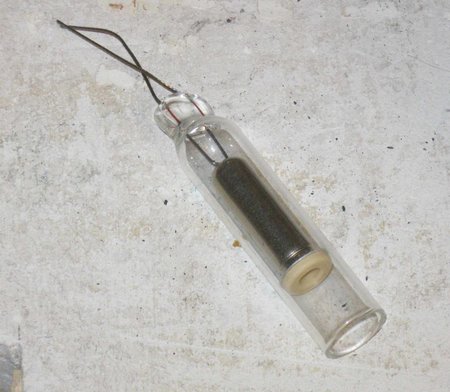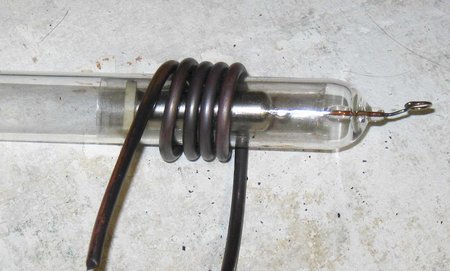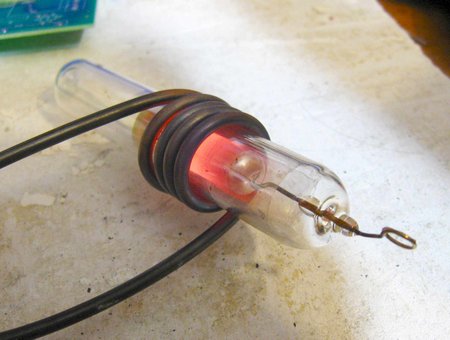- Announcements
- BBQ and Food
- Cars
- Computing
- Cool Stuff
- Current Events
- Electric Vehicles
- Electronics
- Energy
- Flashahaulism
- Funny
- Government
- Hints and Tips
- History
- HVAC
- Induction heating
- Internet
- Lighting
- Misc
- Neon and other lighting
- Nuclear
- Personal
- Pets
- Philosophy
- Photography
- Power Generation
- Product Reviews
- Projects
- Q and A
- RV/Camping
- Science
- Tellico
Categories
Blogroll
 Print This Post
Print This Post
Using an Induction Heater – Neon Electrodes
PermaLinkThe common neon sign unit consists of a length of glass bent to shape with electrodes attached to each end and filled with either neon gas or a mixture of argon gas and mercury. During the manufacture of the neon unit, the electrodes have to be processed. That is, they have to be heated to red heat while in a vacuum. This is a specific application in the broader area of vacuum heating objects inside glass or other non-conductive material. This is a task for which induction heating is ideally suited.
Here is a typical neon electrode. It consists of several parts. There is the outer glass shell that is welded to the neon unit itself. Inside is a nickel-plated iron shell electrode capped with a ceramic collar. The inside of the shell is coated with a mixture of electron emissive chemicals in the form of metal carbonates. After a vacuum is drawn on the neon unit, the metal shell must be heated red hot to convert the carbonates to metallic oxides. There are several methods to do this but the induction heater is the fastest and cleanest.
This shows a typical electrode set up for heating. 4.5 turns of #10 wire are wrapped into a coil that the neon electrode slides into.
And here is the electrode at heat.
This short video shows just how fast a neon electrode is heated with induction heating.
Video of Induction Heated Neon Electrode
In summary, induction heating is the cleanest and fastest way to heat neon electrodes and other vacuum heating applications. Fluxeon’s® Roy heater makes the process affordable and easy to do.
Posted by neonjohn on September 16th, 2010 under Cool Stuff, Induction heating


Leave a Comment